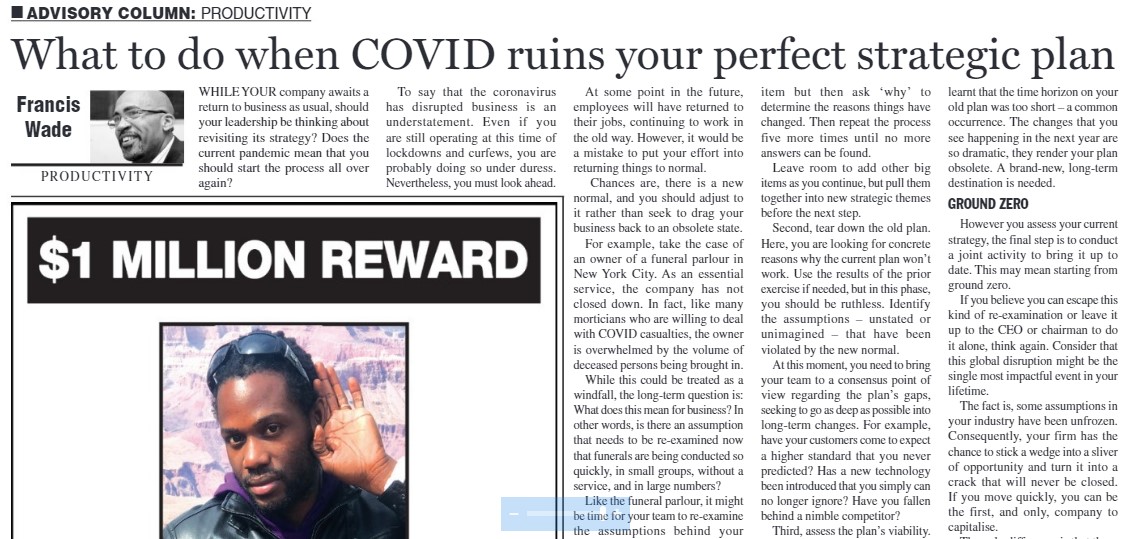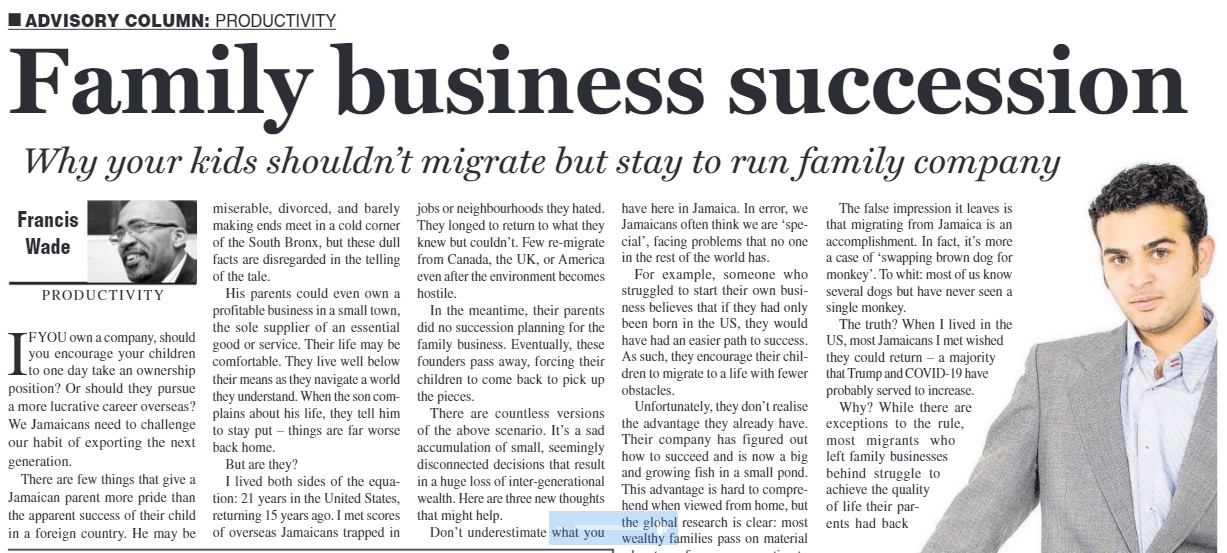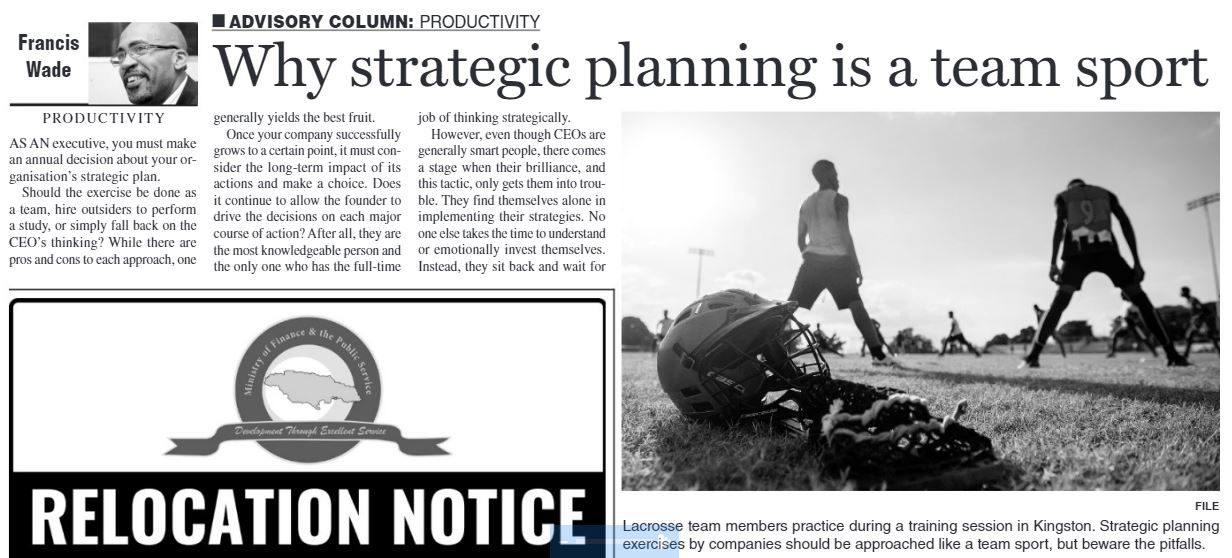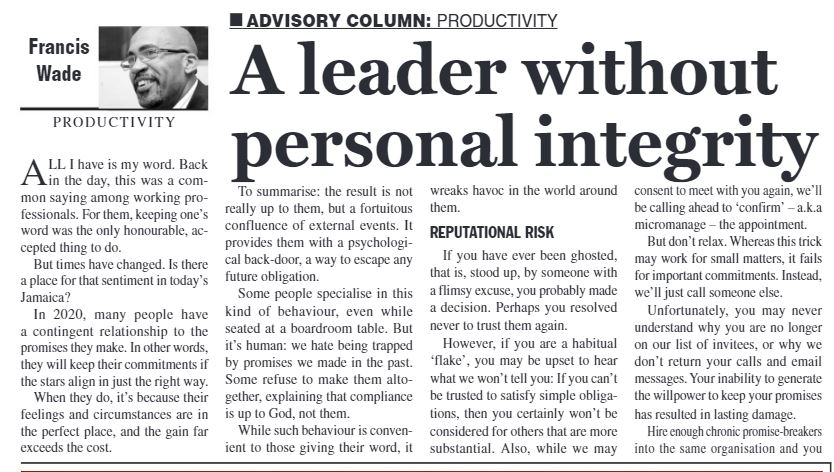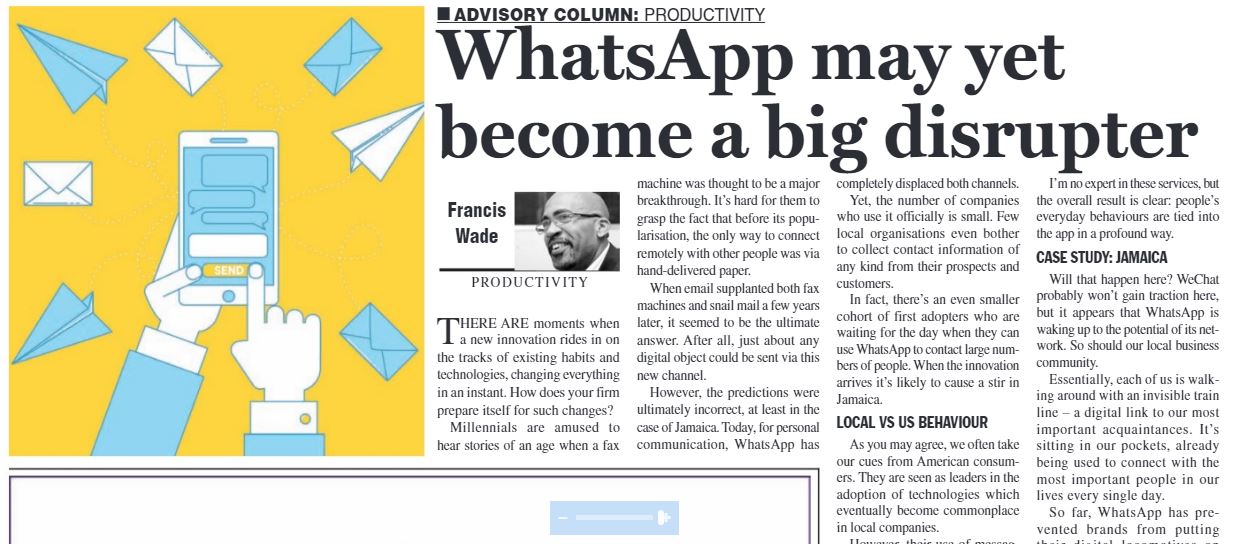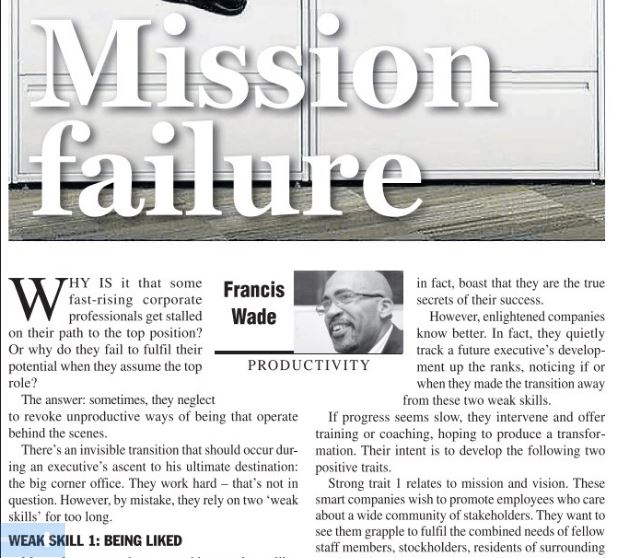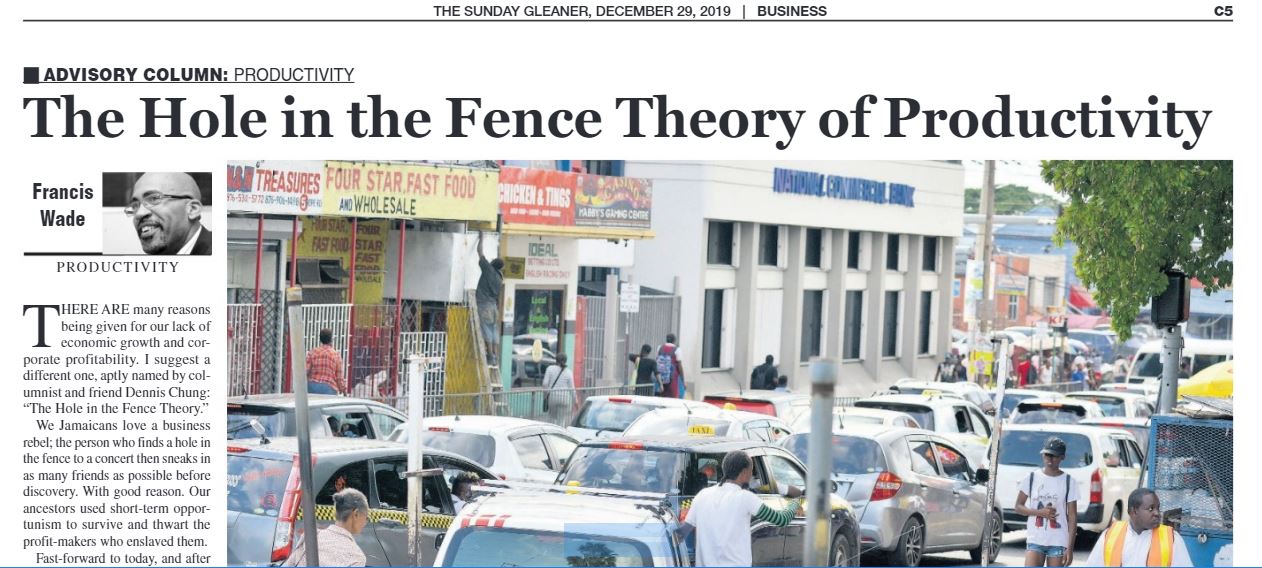While your company awaits a return to business as usual, should your leadership be thinking about revisiting its strategy? Does the current pandemic mean that you should start the process all over again?
To say that the coronavirus has disrupted business is an understatement. Even if you are still operating at this time of lockdowns and curfews, you are probably doing so under duress. Nevertheless, you must look ahead.
At some point in the future, employees will have returned to their jobs, continuing to work in the old way. However, it would be a mistake to put your effort into “returning things to normal.” Chances are, there is a new normal and you should adjust to it, rather than seek to drag your business back to an obsolete state.
For example, take the case of an owner of a funeral parlour in New York City. As an essential service, the company has not closed down. In fact, like many morticians who are willing to deal with COVID casualties, the owner is overwhelmed by the volume of deceased persons being brought in.
While this could be treated as a windfall, the long-term question is “What does this mean for business?” In other words, is there an assumption that needs to be re-examined now that funerals are being conducted so quickly, in small groups, without a service, in large numbers?
Like this company, it might be time for your team to re-examine the assumptions behind its strategic plan. Here are three steps for engaging your executives and board members.
Part 1 – Enumerate the Disruptions
Start by making a list of the most obvious changes. When the big-ticket items are out of the way, look for the ones that are harder to see but may be just as important.
One method is to begin with a single pronounced item but then ask “Why” to determine the reasons things have changed. Then repeat the process asking “Why?” five more times, until no more answers can be found.
Leave room to add other big items as you continue, but pull them together into new strategic themes before the next step.
Part 2 – Tear-down the Old Plan
Here, you are looking for concrete reasons why the current plan won’t work. Use the results of the prior exercise if needed, but in this phase you should be ruthless. Identify the assumptions (unstated or unimagined) which have been violated by the new normal.
At this moment, you need to bring your team to a consensus point of view regarding the plan’s gaps, seeking to go as deep as possible into long-term changes. For example, have your customers come to expect a higher standard that you never predicted? Has a new technology been introduced that you simply can no longer ignore? Have you fallen behind a nimble competitor?
Part 3 Assess the Plan’s Viability
In this final step, you decide whether or not the current plan needs to be changed and to what degree.
In some cases, your plan may have anticipated the disruptions which are underway as a result of COVID-19. For example, perhaps you contemplated that within five years you would be delivering service to customers remotely using a tool like Zoom or WhatsApp.
Now, you realize, you need to do so immediately just to keep up.
Or, you may have learned that the time horizon on your old plan was too short – a common occurrence. The changes that you see happening in the next year are so dramatic, they render your plan obsolete. A brand new, long-term destination is needed.
However you assess your current strategy, the final step is to conduct a joint activity to bring it up to date. This may mean starting from ground zero.
If you believe you can escape this kind of re-examination or leave it up to the CEO or Chair to do it alone, think again. Consider that this global disruption might be the single most impactful event in your lifetime.
The fact is, some assumptions in your industry have been unfrozen. Consequently, your firm has the chance to stick a wedge into a sliver of opportunity and turn it into a crack that will never be closed. If you move quickly, you can be the first (and only) company to capitalize.
The only difference is that these things usually happen slowly, over a decade or more. Now, for a change, they are happening with lightning speed.
The ideal way for your team to respond is not to sit back, wait and see what happens next. Instead, pull together your best minds to understand the entirety of the new normal so that you can craft a fresh strategy.

